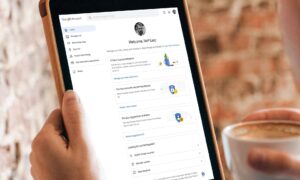Biometric technology is catapulting into the mainstream in this digital era. Mobile phone makers are integrating biometric sensors and scanners into their products. Consequently, businesses operating in the virtual world are leveraging biometric technology to increase their system’s security.
More enterprises are acquiring identity authentication solutions from companies with fido2 certification to deploy FIDO-based authentication, which offers better digital security than passwords or other knowledge-based authentication. FIDO authentication solutions allow business entities to integrate passwordless authentication into their platforms, enabling their customers to conveniently and safely authenticate into their accounts or complete a transaction.
Modern biometric authentication technology has played a crucial role in cybersecurity, particularly in 2020, when the COVID-19 pandemic broke out. But, before it became publicly available today, biometric technology was mainly for government use.
The evolution of biometric technology started when scientists studied acoustic speech and phonic sounds’ physiological characteristics in 1960. This influenced the development of modern voice recognition technology. A few years after, government agencies invested in the research and invention of other biometric technology.
The Federal Bureau of Investigation (FBI) began exploring the idea of automated fingerprint identification in 1969. This led to the study of minutiae points to map unique patterns and ridges. By 1975, the agency funded the first scanners to extract fingerprint points. However, digital storage was high-priced at the time, so the National Institute of Science and Technology (NIST) worked on the technology’s compression and algorithms. Consequently, this led to the creation of the M40 algorithm used by the FBI.
By the 1990s, biometric technology was booming, with more scientists studying its potential application. In this era, the technology was made available for commercial use. It is used for employee identification, visa applications, and biometric authenticator for passports and other Machine Readable Travel Documents (MRTDs). In addition, the use of biometrics for identification purposes also enabled government agencies to monitor national identity threats.
Then, by 2010, the technology became available for public use, with mobile phone companies Apple and Samsung integrating biometric fingerprint scanners into their devices to enable their users to secure their devices.
For more information about the history of biometric technology, see this infographic by LoginID.







